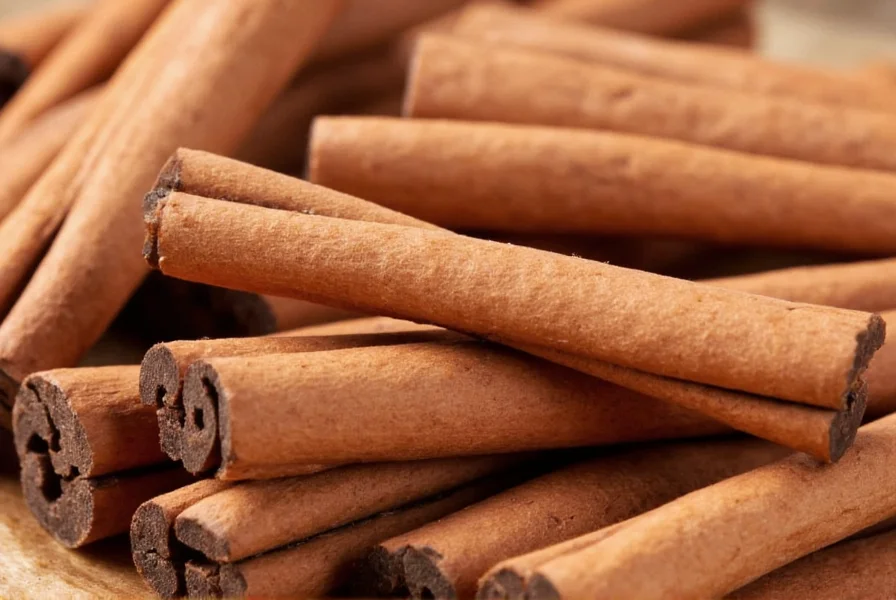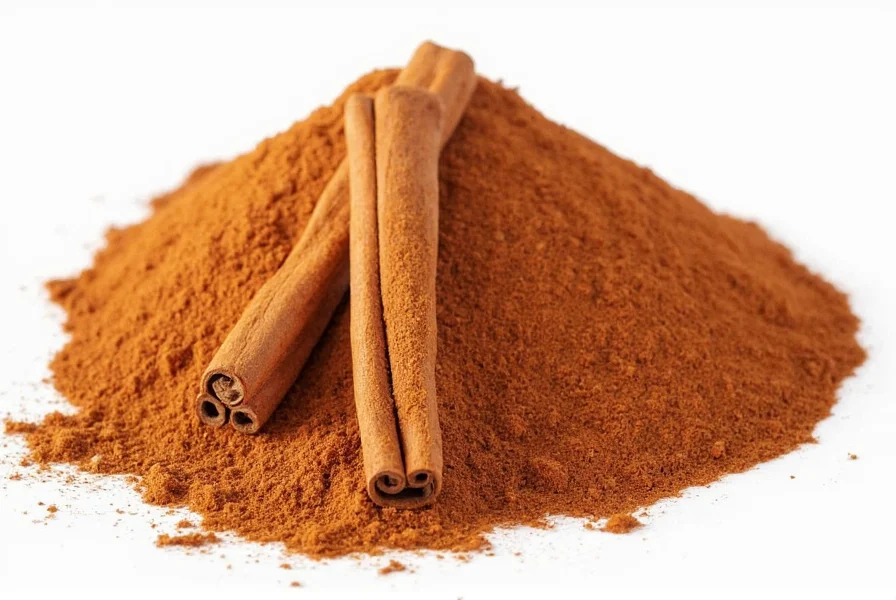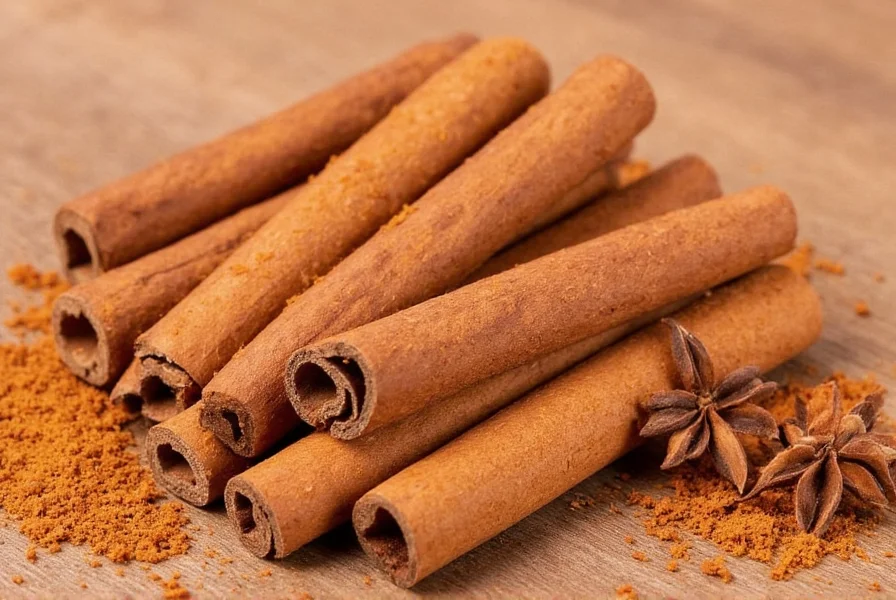Indonesian cinnamon, often labeled as Korintje cinnamon in commercial markets, represents one of the most widely consumed cinnamon varieties globally. Unlike the delicate, paper-thin quills of Ceylon cinnamon, Indonesian cinnamon forms thick, tightly rolled sticks with a deep reddish-brown color. The distinctive bark structure results from the specific growing conditions in Indonesia's tropical climate and volcanic soil, which contribute to its robust flavor profile.
Understanding Indonesian Cinnamon Characteristics
Scientifically classified as Cinnamomum burmannii, Indonesian cinnamon belongs to the Lauraceae family. This species develops in lowland tropical forests where consistent rainfall and warm temperatures create ideal growing conditions. The trees typically reach 10-15 meters in height, with the cinnamon harvested from the inner bark of 2-3 year old branches.
The harvesting process involves cutting young shoots, scraping off the outer bark, and carefully separating the inner bark. As the inner bark dries, it naturally curls into the characteristic quills we recognize as cinnamon sticks. Indonesian cinnamon quills typically measure 2-3 mm in thickness and form single or double rolls, distinguishing them from the multiple thin layers of Ceylon cinnamon.
Flavor Profile and Aromatic Properties
Indonesian cinnamon delivers a powerful, sweet-spicy flavor with noticeable warmth and subtle woody notes. Its essential oil composition contains approximately 50-60% cinnamaldehyde, the compound responsible for cinnamon's signature taste and aroma. This high concentration creates a more intense flavor compared to Ceylon cinnamon, which contains about 60-75% cinnamaldehyde but in a more delicate balance with other compounds.
The aroma of Indonesian cinnamon features pronounced warmth with hints of citrus and floral undertones when freshly ground. Professional flavor evaluators note its longer-lasting heat sensation on the palate compared to other cinnamon varieties. This intensity makes it particularly suitable for baked goods, spice blends, and applications where the cinnamon flavor needs to stand out against other ingredients.
Comparison with Other Cinnamon Varieties
Understanding the differences between cinnamon types helps consumers make informed choices based on their specific needs. The table below highlights key distinctions between Indonesian cinnamon and other major varieties:
| Characteristic | Indonesian Cinnamon (C. burmannii) | Ceylon Cinnamon (C. verum) | Chinese Cinnamon (C. cassia) |
|---|---|---|---|
| Origin | Indonesia (Sumatra, Java) | Sri Lanka, India | China, Vietnam |
| Bark Thickness | 2-3 mm (thick, rough) | 0.5-1 mm (thin, delicate) | 2-3 mm (thick, hard) |
| Coumarin Content | High (2,500-6,000 ppm) | Very Low (50-150 ppm) | Very High (2,500-12,000 ppm) |
| Flavor Intensity | Strong, sweet-spicy | Mild, citrusy, complex | Intense, pungent, less sweet |
| Quill Structure | Single or double roll | Multiple thin layers | Tight single roll |
Cultivation and Production Process
Indonesian cinnamon cultivation centers primarily in West Sumatra's Kerinci Valley and parts of Java, where volcanic soil provides essential minerals. Farmers typically plant seedlings during the rainy season, with trees reaching harvestable maturity in 2-3 years. The sustainable harvesting method involves cutting 2-3 year old shoots close to the ground, allowing the plant to regenerate new shoots for future harvests.
The post-harvest processing requires skilled labor. Workers scrape the outer bark within 24 hours of cutting, then carefully separate the inner bark using traditional bamboo tools. The inner bark strips are left to dry in shaded conditions for 4-7 days, during which they naturally curl into quills. This traditional method preserves the essential oils better than mechanical processing, resulting in superior flavor retention.

Culinary Applications and Pairing Suggestions
Indonesian cinnamon's robust flavor makes it particularly well-suited for applications where the spice needs to maintain its presence. In Indonesian cuisine, it features prominently in rendang (spicy meat stew), bika ambon (honeycomb cake), and various traditional herbal drinks. Internationally, professional bakers prefer it for gingerbread, snickerdoodles, and other spiced cookies where its strong flavor won't get lost.
When pairing Indonesian cinnamon with other ingredients, consider these combinations:
- Dairy products: Creates a warm, comforting flavor in rice pudding and chai tea
- Chocolate: Complements dark chocolate in baking and confections
- Fruits: Works exceptionally well with apples, pears, and tropical fruits
- Spice blends: Forms the base for pumpkin spice, garam masala, and Chinese five-spice powder
Health Considerations and Safety
While Indonesian cinnamon offers potential health benefits including antioxidant properties and blood sugar regulation support, its higher coumarin content requires consideration. Coumarin, a natural compound found in higher concentrations in cassia varieties, can cause liver toxicity when consumed in large amounts over time.
The European Food Safety Authority recommends a maximum daily intake of 0.1 mg of coumarin per kilogram of body weight. For a 60 kg adult, this translates to approximately 1.5-2 grams of Indonesian cinnamon daily. Those using cinnamon regularly for health purposes might consider alternating between Indonesian and Ceylon varieties to manage coumarin exposure while still benefiting from cinnamon's properties.

Selecting and Storing High-Quality Indonesian Cinnamon
When purchasing Indonesian cinnamon, look for these quality indicators:
- Color: Deep reddish-brown (avoid pale or overly dark specimens)
- Aroma: Strong, sweet-spicy scent when broken
- Texture: Brittle enough to snap cleanly when bent
- Origin labeling: Authentic products specify Indonesian origin
Proper storage maintains flavor integrity. Keep cinnamon sticks in airtight containers away from light and heat. Ground cinnamon loses potency more quickly, so whole sticks generally provide better flavor retention. For optimal freshness, use within 1-2 years of purchase, though properly stored sticks can maintain acceptable quality for up to 3 years.
Sustainability and Economic Impact
Indonesian cinnamon cultivation supports approximately 150,000 smallholder farmers across Sumatra and Java. The industry follows traditional agroforestry practices that maintain biodiversity, with cinnamon trees often grown alongside coffee, cloves, and nutmeg. Recent sustainability initiatives focus on improving processing methods to reduce post-harvest waste and increase farmer income through value-added products.
Consumers seeking ethically sourced Indonesian cinnamon can look for certifications like Fair Trade or organic labels, which ensure fair compensation for farmers and environmentally responsible practices. The growing global demand for authentic Indonesian cinnamon has created economic opportunities in rural communities while preserving traditional cultivation knowledge.
Frequently Asked Questions
Is Indonesian cinnamon the same as cassia cinnamon?
Indonesian cinnamon (Cinnamomum burmannii) is a specific type of cassia cinnamon, often called Korintje cinnamon in commercial markets. While all Indonesian cinnamon is cassia, not all cassia is Indonesian—Chinese cinnamon (Cinnamomum cassia) is a different species within the cassia family with slightly different flavor characteristics and higher coumarin levels.
What makes Indonesian cinnamon different from Ceylon cinnamon?
Indonesian cinnamon has thicker, rougher bark quills with a stronger, more intense flavor compared to Ceylon cinnamon's delicate, paper-thin layers and milder taste. Indonesian cinnamon also contains significantly higher levels of coumarin (2,500-6,000 ppm) than Ceylon cinnamon (50-150 ppm), which affects both flavor and health considerations for regular consumption.
Can I use Indonesian cinnamon for health benefits?
Yes, Indonesian cinnamon offers antioxidant properties and may help regulate blood sugar, but its higher coumarin content requires moderation. For regular therapeutic use, limit consumption to 1-2 grams daily or alternate with Ceylon cinnamon. Those with liver conditions or taking medications should consult a healthcare provider before using cinnamon medicinally.
How can I tell if my Indonesian cinnamon is authentic?
Authentic Indonesian cinnamon should have thick, rough quills (2-3 mm) with a deep reddish-brown color and strong, sweet-spicy aroma. When broken, it should snap cleanly and release a potent fragrance. Be wary of products labeled as Indonesian cinnamon that have thin, delicate quills or mild flavor, as these may be mislabeled Ceylon cinnamon or lower-quality substitutes.











 浙公网安备
33010002000092号
浙公网安备
33010002000092号 浙B2-20120091-4
浙B2-20120091-4